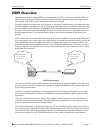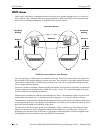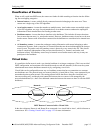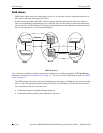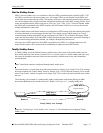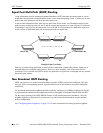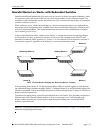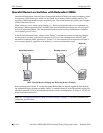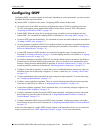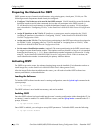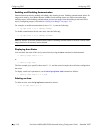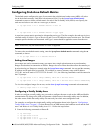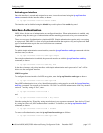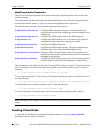
Configuring OSPF Configuring OSPF
OmniSwitch 6800/6850/9000 Advanced Routing Configuration Guide December 2007 page 1-15
Configuring OSPF
Configuring OSPF on a router requires several steps. Depending on your requirements, you may not need
to perform all of the steps listed below.
By default, OSPF is disabled on the router. Configuring OSPF consists of these tasks:
• Set up the basics of the OSPF network by configuring the required VLANs, assigning ports to the
VLANs, and assigning router identification numbers to the routers involved. This is described in
“Preparing the Network for OSPF” on page 1-16.
• Enable OSPF. When the image file for advanced routing is installed, you must load the code and
enable OSPF. The commands for enabling OSPF are described in “Activating OSPF” on page 1-16.
• Create an OSPF area and the backbone. The commands to create areas and backbones are described in
“Creating an OSPF Area” on page 1-17.
• Set area parameters (optional). OSPF will run with the default area parameters, but different networks
may benefit from modifying the parameters. Modifying area parameters is described in “Configuring
Stub Area Default Metrics” on page 1-19.
• Create OSPF interfaces. OSPF interfaces are created and assigned to areas. Creating interfaces is
described in “Creating an Interface” on page 1-20, and assigning interfaces is described in “Assigning
an Interface to an Area” on page 1-20.
• Set interface parameters (optional). OSPF will run with the default interface parameters, but different
networks may benefit from modifying the parameters. Also, it is possible to set authentication on an
interface. Setting interface authentication is described in “Interface Authentication” on page 1-21, and
modifying interface parameters is described in “Modifying Interface Parameters” on page 1-22.
• Configure virtual links (optional). A virtual link is used to establish backbone connectivity when two
backbone routers are not physically contiguous. To create a virtual link, see “Creating Virtual Links”
on page 1-22.
• Create a redistribution policy and enable the same using route maps (optional). To create route maps,
see “Configuring Redistribution” on page 1-23.
• Configure router capabilities (optional). There are several commands that influence router operation.
These are covered briefly in a table in “Configuring Router Capabilities” on page 1-30.
• Create static neighbors (optional). These commands allow you to statically configure neighbors. See
“Configuring Static Neighbors” on page 1-31.
• Configure redundant switches for graceful OSPF restart (optional). Configuring switches with redun-
dant switches for graceful restart is described in “Configuring Redundant Switches in a Stack for
Graceful Restart” on page 1-32.
• Configure redundant CMMs for graceful OSPF restart (optional). Configuring switches with redun-
dant switches for graceful restart is described in “Configuring Redundant CMMs for Graceful Restart”
on page 1-33.
At the end of the chapter is a simple OSPF network diagram with instructions on how it was created on a
router-by-router basis. See “OSPF Application Example” on page 1-34 for more information.



